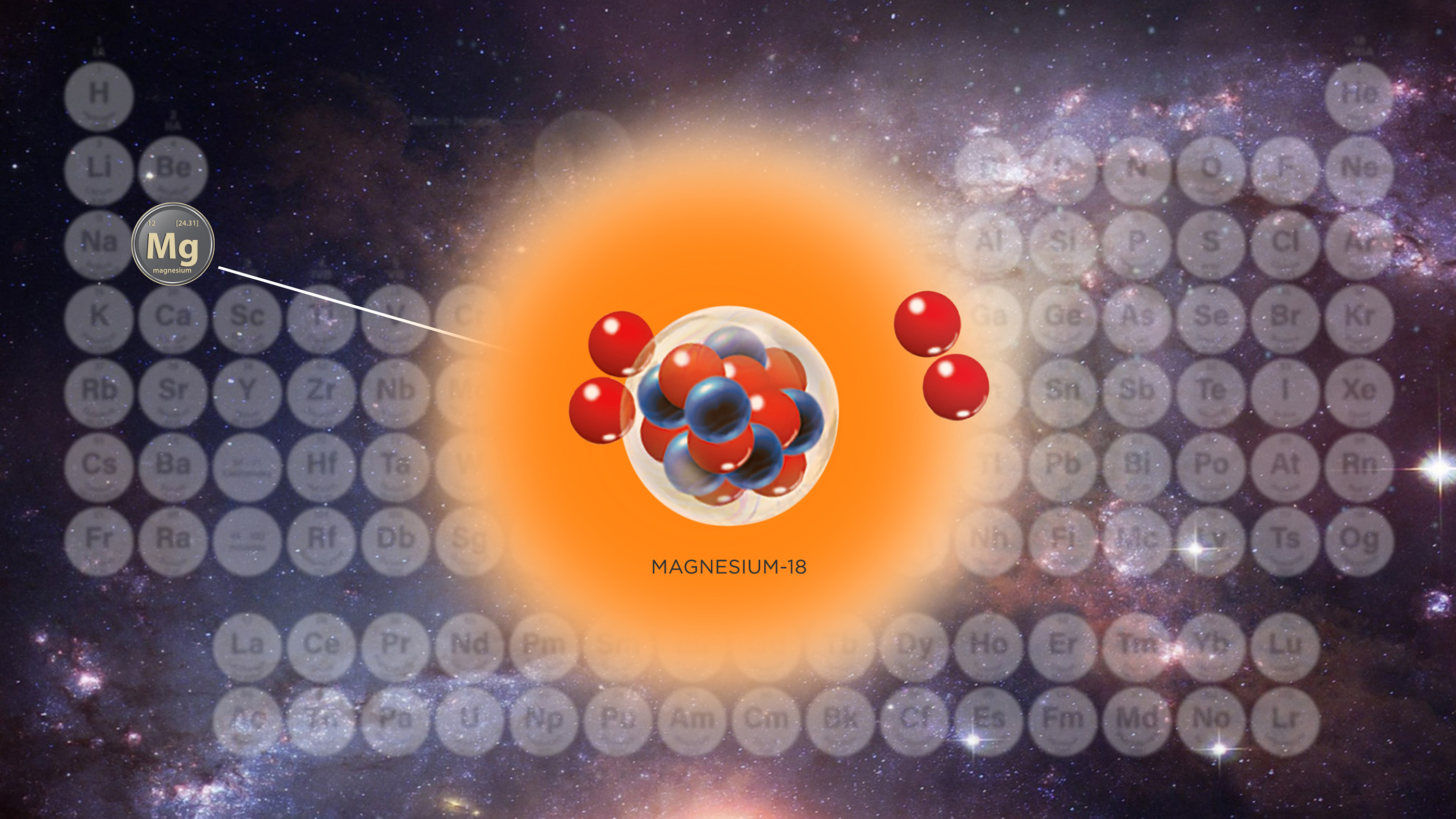Scientists create never-before-seen isotope of magnesium
It's the world's lightest isotope of magnesium.

Scientists have just created the world's lightest form of magnesium — a never-before-seen isotope with just six neutrons in its atomic nuclei — inside a giant atom smasher.
And while the substance disintegrates too quickly to be measured directly, the researchers expect their discovery will help scientists better understand how atoms are constructed. That's because such exotic isotopes — versions of chemical elements with either more or fewer neutrons in their nuclei than usual — can help define the limits of the models that scientists use to figure out how atoms work.
"By testing these models in making them better and better we can extrapolate out to how things work where we can't measure them," said Kyle Brown, a chemist at the Facility for Rare Isotope Beams at Michigan State University in East Lansing. "We're measuring the things we can measure to predict the things we can't."
The new magnesium isotope — called magnesium-18 — won't fill all the gaps in scientific knowledge about atoms, but the discovery will help refine the theories that scientists have developed to explain them, he said. In particular, the team's measurements of the products of the isotope's radioactive decay give new insights into the binding energies of electrons that orbit a nucleus, according to a summary of the research.
Atomic nuclei
Under normal conditions, pure magnesium is a soft gray metal with the atomic number 12, which indicates it has 12 protons — particles with a positive charge — in its nucleus. It's highly flammable, and the intense white light from a burning magnesium strip often dazzles students in chemistry classes.
Like many chemical elements, magnesium originates in the fusion reactions of aging stars, and it's found on Earth because those long-dead stars have exploded as supernovas and "seeded" the interstellar clouds that formed our solar system. Magnesium is relatively abundant in the Earth's crust and it has an important chemical role in many biological and industrial compounds.
The most common stable isotope of magnesium has 12 neutrons — particles with a neutral charge — in each nucleus, giving this version of the element an atomic mass of 24. As a result, it's called magnesium-24.
Get the world’s most fascinating discoveries delivered straight to your inbox.
For their experiments, the researchers accelerated a beam of magnesium-24 nuclei to about half the speed of light inside the National Superconducting Cyclotron Laboratory at MSU — a circular, ultra-high-energy particle accelerator. They then fired the high-speed beam of magnesium nuclei at a target of metal foil made of beryllium.
The collision in that step of the process yielded a "soup" of lighter magnesium isotopes the researchers could select from — among them the unstable isotope magnesium-20, which holds just eight neutrons per nucleus and radioactively decays in a few tenths of a second.
Working against the clock, the researchers then fired the magnesium-20 nuclei — again at about half the speed of light — at yet another beryllium target, about 100 feet (30 meters) away.
One of the products of the resulting collision was the newly-discovered isotope, magnesium-18 — the "lightest" isotope of magnesium ever seen, with 12 protons and just six neutrons in its nucleus.
Rare isotope
Most atomic nuclei quickly "cloak" themselves with electrons — particles with a negative charge — from their environment and become elemental atoms, which then can combine with atoms of other types to make chemical compounds.
But the newly-discovered magnesium-18 isotope is radically unstable and very short-lived: With so few neutrons, the nucleus quickly falls apart, with a half-life — the time it takes for half of its nuclei to disintegrate from radioactive decay — of less than one-sextillionth of a second, or 10^-21 seconds.
That means, it disappears much too quickly for a nucleus of magnesium-18 to even have the chance to cloak itself with electrons' and so it exists — and only very briefly — as "naked" nuclei.
The isotope is so short-lived, in fact, that the magnesium-18 never leaves the beryllium target but decays inside it — and so the researchers deduced its presence from the telltale products of its decay: stray protons and the isotopes neon-16 and oxygen-14, the statement said.
"This was a team effort," Brown said. "It's pretty exciting — it's not every day people discover a new isotope."
Scientists have now identified several thousand isotopes of the 118 common elements in the periodic table, and more are discovered every year.
"We're adding drops to a bucket, but they are important drops," Brown said. "We can put our names on this one, the whole team can. And I tell my parents that I helped discover this nucleus that nobody else has seen before."
Brown is a lead author of an article describing the discovery published last week in the journal Physical Review Letters. Scientists from Peking University in China and Washington University in St. Louis were also involved.
Originally published on Live Science.
Tom Metcalfe is a freelance journalist and regular Live Science contributor who is based in London in the United Kingdom. Tom writes mainly about science, space, archaeology, the Earth and the oceans. He has also written for the BBC, NBC News, National Geographic, Scientific American, Air & Space, and many others.


